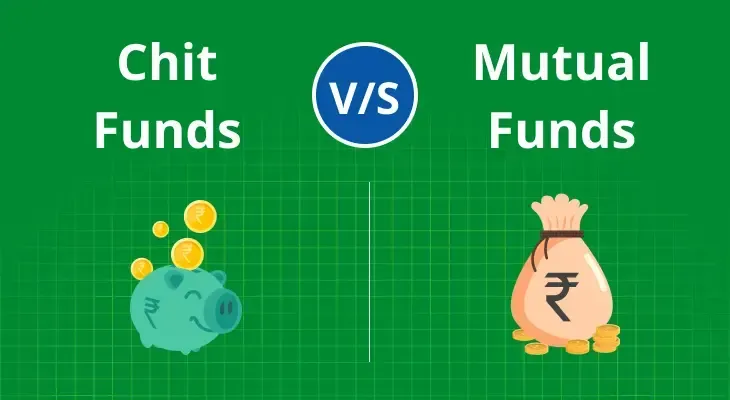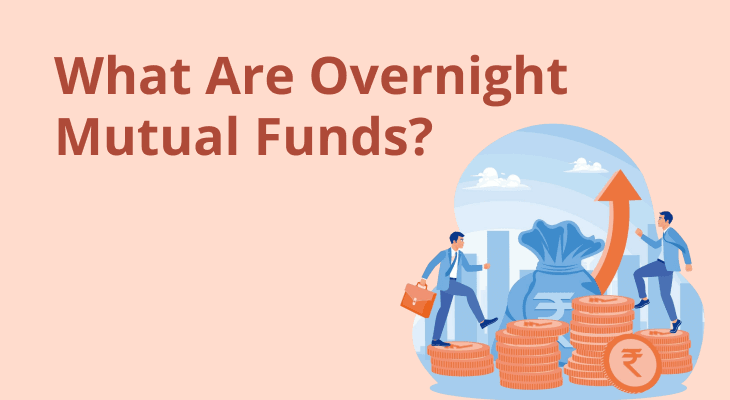
Mutual Funds vs. Chit Funds: What is the Difference Between Chit Funds and Mutual Funds
When it comes to growing your hard-earned money, the world of investments offers a variety of choices. Two such options that often find themselves under the spotlight are Mutual Funds and Chit Funds. These financial instruments have gained popularity across India, enticing individuals with promises of financial growth. But, what are the differences between these two, and which one suits your financial goals better?
Let's explore the world of Mutual Funds vs. Chit Funds to understand their workings, benefits, and drawbacks.
Understanding Chit Funds
A Chit Fund is a unique financial model that blends borrowing and saving aspects. It involves a group of individuals contributing a fixed amount of money at regular intervals to form a 'chit'. This chit is then auctioned off, allowing one member to borrow the total amount, while others continue to contribute. The process continues until all members get their turn. This system thrives on trust, making it a close-knit investment option.
Working of Chit Funds
Chit Funds operate on the principle of collective savings and borrowing. Let's say you are a member of a Chit Fund with 10 participants, each contributing ₹5,000 monthly. This creates a monthly pool of ₹50,000. In the first month, this amount is auctioned to the highest bidder or allocated based on need. The bid amount is then subtracted from the pool, and the process repeats. If you are the last participant to receive the money, you'll have received a 'zero-interest loan' from your fellow members. This makes Chit Funds a sort of community-driven lending platform.
Functioning of Mutual Funds
Mutual Funds are conventional investment tools. They collect money from different investors and put it into a mix of stocks, bonds, or other kinds of investments. A fund manager looks after these investments and tries to make profits for the investors. The level of risk and the potential rewards depend on the type of Mutual Fund. For example, Equity Mutual Funds invest in stocks and are more risky, while Debt Mutual Funds focus on bonds and are comparatively safer.
Famous Chit Funds
Several well-known Chit Funds have established their presence in India. Let's take a look at a few of them:
Margadarsi Chit Fund
In October 1962, Ramoji Rao founded Margadarsi Chit Fund Private Limited. This chit fund business operates in three states: Karnataka, Tamil Nadu, and Andhra Pradesh. One of its renowned plans is called STE. If you pay ₹200 each month for 25 months, the scheme's chit value becomes ₹5,000. Similarly, the STF scheme works this way: if you contribute ₹400 every month for 25 years, the chit value will grow to ₹ 10,000. In the ongoing comparison of chit fund vs. mutual fund, Margadarsi Chit Fund emerges as a symbol of trust and transparency. Margadarsi’s commitment to ethical practices and adherence to rules instils a sense of assurance.
Shriram Chits
This is the largest chit fund in the country and likely a very safe option. The company employs around 6,000 staff and operates in Andhra Pradesh, Maharashtra, Tamil Nadu, and Karnataka. The company has a customer base of 2.2 million people. As we explore the complex comparison of chits vs. mutual funds, Shriram Chits stands out as a bridge between traditional and modern financial practices. Shriram Chits introduces flexible plans that capture the essence of community savings while adjusting to changing financial needs.
Government Of Kerala Linked Chitty
The Kerala State Financial Enterprises has launched a chit fund, also known as a chitty. Amidst the mutual fund vs. chit fund contest, the Government of Kerala Linked Chitty stands out as one of the finest and most secure options among chit funds in India as a government-backed option for financial growth. It's important to note that this scheme is exclusively accessible to individuals residing in Kerala. This participant in the chitty vs. mutual fund debate offers a unique combination of security and returns, appealing to those who seek the best of both worlds.
Mysore Sales International
stablished this organisation, which started operating in 2005. The plans offered by this company are well-known because they accept small amounts initially. MSI offers a wide range of chit schemes designed for various financial capacities. MSI adds a modern twist to the chit fund vs. sip discussion, adapting to diverse preferences as it provides financial support to individuals during emergencies and offers immediate cash assistance.
Mutual Funds vs. Chit Funds
Aspect | Mutual Funds | Chit Funds |
|---|---|---|
Nature | Professionally managed investment vehicle. | Community-driven savings and borrowing model. |
Investment | Diversified portfolio of stocks, bonds, and securities. | Regular contributions form a chit. |
Risk and Returns | Vary based on fund type (Equity, Debt, Hybrid). | Return depends on chit auction and cycle. |
Management | Handled by professional fund managers. | Relies on the trust and participation of members. |
Flexibility | Multiple fund categories catering to risk profiles. | Limited flexibility, often tied to cycle duration. |
Liquidity | Generally more liquid, can be bought/sold daily. | Limited liquidity, withdrawal at specific points. |
Prize/Borrowing | No direct borrowing. | Involves borrowing when the chit is won. |
Returns | Subject to market performance. | Returns vary based on chit auctions. |
Purpose | Long-term wealth growth and goals. | Community-based savings or specific needs. |
Regulation | Regulated by SEBI (Securities Exchange Board). | Oversight varies; can lack regulatory backing. |
Ease of Entry | Easily accessible with varying minimum amounts. | Requires joining a chit group and contribution. |
Profits & Losses | Potential for higher profits; risk of losses. | Potential to benefit from zero-interest borrowing. |
Tax Implications | Taxation varies based on fund type and tenure. | Tax implications vary based on earnings. |
In the mutual fund vs. chit fund comparison, the choice between the two investment options depends on your risk tolerance, financial goals, and comfort level with community-driven models. It's essential to thoroughly understand both options and seek professional advice before making investment decisions.
Should you Invest in Chit Funds?
Deciding whether to invest in Chit Funds depends on your financial goals, risk tolerance, and familiarity with the participants. Chit Funds can be appealing if you prioritise localised support and are comfortable with the community-driven model. However, they lack the professional management that Mutual Funds offer.
For those seeking a more diversified and potentially higher return investment, Mutual Funds are a solid choice. With various categories catering to different risk profiles, you can choose the fund that aligns with your financial objectives. Additionally, Systematic Investment Plans (SIPs) within Mutual Funds provide a disciplined way to invest over time.
Conclusion
The ideal choice between Mutual Funds vs. Chit Funds depends on your financial situation and goals. Chit Funds bring a sense of community and localised support, making them suitable for those who value trust and shared savings. However, if you are looking for professional management, diversification, and potential growth, Mutual Funds, especially through SIPs, offer a robust investment avenue.
Whether you decide on a chit fund or a mutual fund, the essential factor is to make well-informed decisions that lay the foundation for a financially stable future.
SIPs let you invest small amounts regularly, making it easier to stay consistent with your goals. With time, your money grows faster through compounding, helping you get the most out of your investments. Try our SIP Calculator to see how your money can grow and make smarter plans for your future.
FAQ
Are Chit Funds guaranteed by the government?
No, Chit Funds are not guaranteed by the government. While some government-linked chit schemes offer added security, Chit Funds in general do not have government backing.
What is the minimum investment for Mutual Funds?
The minimum investment amount varies based on the Mutual Fund and the type of investment. However, it can start as low as ₹500 for certain schemes.
Can I withdraw from a Chit Fund before the cycle ends?
Withdrawing from a Chit Fund before the cycle ends is possible, but it might involve penalties or loss of the opportunity to bid for the prize amount.
Are SIPs safer than one-time investments in Mutual Funds?
SIPs distribute investments over time, reducing the impact of market volatility. This can provide a more disciplined and potentially less risky approach compared to one-time lump-sum investments.
Are returns guaranteed in Mutual Funds?
No, Mutual Funds don't ensure definite returns. The returns depend on how the investments of the fund perform in the market, and they can change due to market ups and downs.


